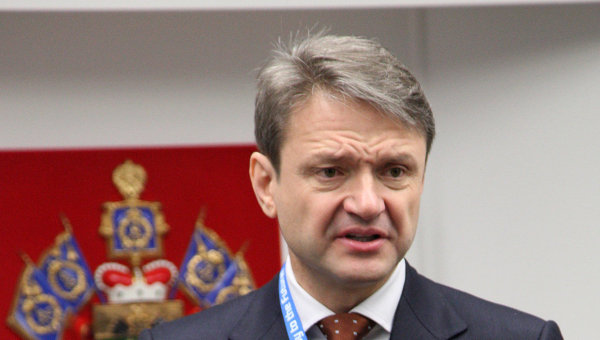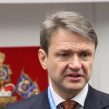
Meskhetian Turks: Ten Years On
Publication: Eurasia Daily Monitor Volume: 10 Issue: 214
By:

Aside from the Winter Olympics in Sochi, 2014 also marks the ten-year anniversary of the resettlement of Krasnodar Krai’s Meskhetian Turk population to the United States. Now, with international attention focused on Russia and Krasnodar Krai (the region that comprises Sochi), the timing warrants a renewed look at the situation of the remaining Meskhetian Turks still living in the Russian Federation. Indeed, on October 29, United States Congressional Representative Adam Kinzinger drew attention to the plight of the Meskhetian Turks in Russia, which he used as an indictment of Vladimir Putin’s “exceptional” regime (https://www.youtube.com/watch?feature=player_embedded&v=NtDmlwMegOE). With nationalist sentiment on the rise amongst ethnic Russians (see EDM, September 20, October 17, November 1), renewed levels of discrimination against the Meskhetian Turks throughout Russia may be increasingly likely.
The Meskhetian or Ahiska Turks originally inhabited a region of South Georgia but were deported to Central Asia by Joseph Stalin in 1944. When pogroms broke out in the Ferghana Valley in 1989, some Turks were relocated to regions across Russia by the Soviet army. Many more re-located on their own in the following few years. While the Meskhetian Turks suffered official discrimination almost everywhere they went, it was particularly grave in Russia’s Krasnodar Krai. Not only did the regional authorities refuse to register the Turks and grant them internal passport permits (propiska), but Cossack formations also regularly harassed Meskhetian Turk communities in the region (Tom Trier and Andrei Khanzin, “The Meskhetian Turks at a Crossroads,” European Centre for Minorities, 2007). The crux of the problem lay in the legal confusion over nationality that emerged at the end of the Soviet Union (Alexander Osipov, in Trier and Khanzin, 2007). Due to this treatment of the Meskhetian Turks, in 2004 the United Nations High Commissioner for Refugees began evacuating a total of 10,000 refugees from Krasnodar Krai and resettling them in Arizona, Ohio, and Pennsylvania. As of 2006, approximately 75,000 Meskhetian Turks remained in the Russian Federation, with 28,500 living in Rostov Oblast, 7,500 in Stavropol Krai, 5,425 in Krasnodar Krai, 4,000 in Voronezh Oblast and 3,100 in Kalmykia. A number of other Russian regions are also populated with communities of fewer than 3,000 Meskhetian Turks (Igor Kuznetsov, in Trier and Khanzin, 2007; European Commission Against Racism and Intolerance [ECRI] Report on the Russian Federation, Council of Europe, 2013). A significant problem with trying to evaluate the situation of the remaining Meskhetian Turk communities is that data is intermittent. Indeed, in some cases, data collection has allegedly been suppressed by the state, such as when Federal Security Service (FSB) personnel met with Meskhetian Turk activists in Rostov and Krasnodar in the summer of 2013 and “advised” them against collecting data as it would be “dangerous” (ECRI Report on the Russian Federation, Council of Europe, 2013).
In Krasnodar, regional host of the 2014 Olympics, life has improved somewhat for the remaining Meskhetian Turks. Of the 5,425 Meskhetian Turks still remaining in this krai, 5,331 were granted citizenship of the Russian Federation, removing the principal barrier to their integration into the region (ECRI Report on the Russian Federation, Council of Europe, 2013). However, those who remain are still subject to informal discrimination. For example, the governor of the region, Alexander Tkachyov, defended his policies of discrimination against the Turks in a 2010 interview on Russia’s Channel One, claiming that he was not a chauvinist or nationalist but that the Meskhetian Turks had brought the fate upon themselves by refusing to integrate and involving themselves in drug-trafficking and prostitution (https://www.youtube.com/watch?v=ILje5ggToFo). In August 2013, the regional branch of the Kuban Cossack host threatened to purge the remaining Meskhetians from a village due to the alleged rape of a 9-year-old Russian girl by an 11-year-old Turkish boy (https://www.rbcdaily.ru/society/562949988684668). Such allegations seem rather obviously flawed, and threats against the Meskhetian Turks remain just below the surface. Islam Shakhbandarov, the president of the Dayton, Ohio, Ahiska (Meskhetian) Turk community center, and an activist for Meskhetian resettlement rights, has alleged that the Meskhetian Turks remaining in Krasnodar are warned of reprisals against them after “the Sochi Olympics are finished” (www.golos-ameriki.ru/content/turkish-russia-usa/1702501.html). Given the Kuban Cossacks’ history with the Meskhetian Turks, such warnings should be taken seriously.
In Kabardino-Balkaria, the number of Meskhetian Turks has increased to over 11,000 people, although true numbers are most likely higher due to many being registered there as “Azerbaijanis” (https://webkamerton.ru/2013/08/turki-mesxetincy-vytesnyayut-russkix/). The increased population has evidently been a source of tension. In 2013, roughly 50 “local” residents disrupted a Meskhetian Turk wedding and beat women and children. According to reports, when local police turned up to mediate the conflict, the officers refused to register any of the complaints (https://www.golos-ameriki.ru/content/turkish-russia-usa/1702501.html). The inaction of the police both reflects the increasing inter-ethnic tensions surrounding the presence of the Meskhetian Turks and the fact that many do not have legal residency in the republic.
In Rostov Oblast, although there was some discrimination in terms of housing and employment toward the Meskhetian Turks, it was not beyond the scope of problems faced by most migrants (Alexander Osipov, in Trier and Khanzin, 2007). In May 2012, however, a 19-year old Meskhetian Turk was killed by a group of ten Russians who gathered in a square known to be an area frequented by nationalists (https://www.kavkaz-uzel.ru/articles/206357/). Nevertheless, it is unclear that the group was targeting Meskhetian Turks specifically, as the incident came after a “massive fight” between nationalists and natives of Ingushetia in January 2012.
Overall, the future for Meskhetian Turks in Putin’s Russia looks grim as the regime resorts to ethnic nationalism as a legitimating ideology (https://jamestownfoundation.blogspot.com/2013/08/possible-consequences-of-matveyevskoye.html). Cossacks throughout the country are likely to be emboldened and in many regions (including the capital, Moscow) have been co-opted by the authorities to police migration and unspecified “crimes” (https://en.ria.ru/russia/20121126/177748573.html). Against this background, the success of any Meskhetian Turk resettlement efforts looks uncertain at best.




